Argentina missing submarine: President pledges inquiry to 'know the truth'
- Published
Families of the crew say relatives aren't being told anything
Argentine President Mauricio Macri has promised that an inquiry into the disappearance of a navy submarine will "know the truth" of what happened.
Mr Macri urged Argentines not to look for people to blame until all the facts were known.
He said the search for the ARA San Juan and its 44 crew would continue.
Hopes have faded since the navy said an event "consistent with an explosion" was detected near the sub's last-known location.
Announcing the official inquiry at navy headquarters in Buenos Aires, Mr Macri said the 34-year-old submarine had recently undergone a refit and was "in perfect condition".
"We should not venture into looking for people to blame," he told a news conference.
"This will require a serious, deep investigation that reveals certainties about why we are witnessing what happened. My commitment is with the truth."

President Mauricio Macri, centre, announced the official inquiry at navy headquarters
Earlier, navy spokesman Capt Enrique Baldi said there was still no trace of the submarine, which vanished nine days ago.
More than 12 countries are involved in the search.
Mr Baldi said search teams had access to "the best technology available" via the US navy.
He added: "We have the best naval, air and sensor resources available in the area, all focused on searching for the submarine. We are still looking and no country is saying at the moment when they will stop. Logically it's time-limited but no-one is speaking about that at the moment."
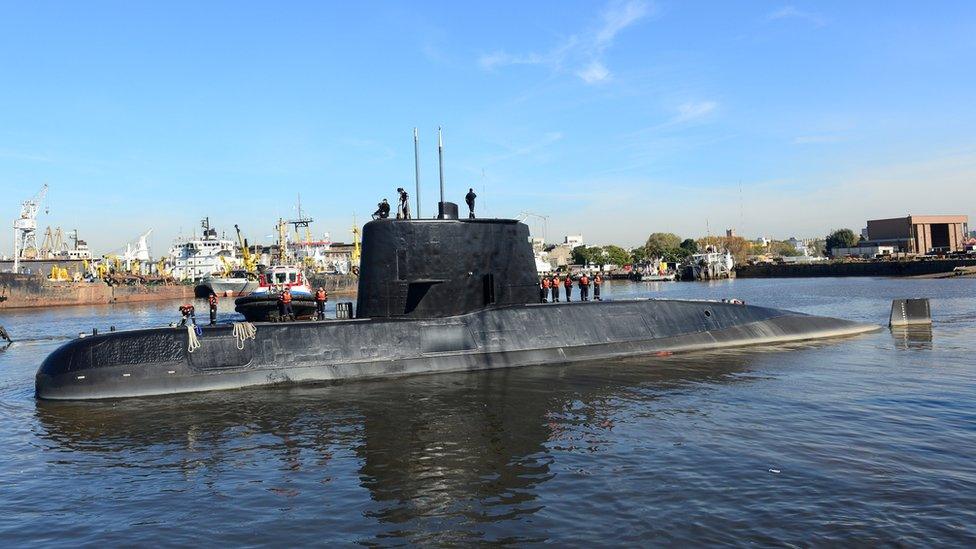
The ARA San Juan disappeared last Wednesday
Some of the crew's relatives reacted with anger to the news on Thursday that an explosion had been detected.
"They manipulated us! They lied to us!" said Itatí Leguizamón, whose husband was on board.
She and others have raised questions about the state of repair the submarine was in. Some said lack of investment and corruption in the armed forces had made the submarine unsafe.
Argentine newspaper La Nación reports that there is speculation that navy chief Marcelo Eduardo Hipólito Srur may resign, but officials have said this is not imminent.
On Wednesday the navy received a US report of a loud noise - called a "hydro-acoustic anomaly" - detected hours after the submarine went missing.
The navy knew only the location of the suspected explosion, not its cause, Captain Baldi said, and search efforts would be concentrated in the area.
What was the sub's last known location?
The ARA San Juan was returning from a routine mission to Ushuaia, near the southernmost tip of South America, when it reported an "electrical breakdown".


According to naval commander Gabriel Galeazzi, the submarine surfaced and reported the breakdown, which was described as a "short circuit" in the sub's batteries.
The sub was ordered to cut its mission short and return to the naval base in Mar del Plata immediately.
According to Capt Baldi, the captain of the ARA San Juan contacted the naval base once more after reporting the problem.
In the message, he reportedly said that the problem had been adequately fixed and that the sub would submerge and proceed towards Mar del Plata.
The last contact was made at 07:30 local time (10:30 GMT) on Wednesday 15 November. It is not known what happened to the sub after that contact.
Argentine navy protocol stipulates that in peace time, submarines make contact with the base twice a day.
When the submarine failed to call in, the Argentine navy began its search.
Who is missing?
There are 44 crew on board the submarine, which is under the command of Pedro Martín Fernández.
Forty-three of the crew are men but there is also one woman, Eliana María Krawczyk. The 35-year-old is the first female officer in Argentina to serve on a submarine.

Her family says it was Eliana María Krawczyk's dream to become a submariner
Nicknamed "the queen of the sea" by her father, she comes from Oberá, a city in northern Argentina.
Despite having been born and raised far inland, her relatives say that "she was born to be a submariner", citing her "will of steel" and a passion for her job.
The rest of the crew is made up of submariners of varying ages and experience.
The sub's engineer, Hernán Rodríguez, has been on the ARA San Juan for 11 years, local media reported.

Submarine tragedies
Accidents involving submarines are rare. Here are some of the most serious:
All 70 crew aboard China's Great Wall Ming-class submarine suffocated in 2003 when a diesel engine malfunctioned, consuming the vessel's oxygen supply
Russia's Kursk submarine sank in the Barents Sea in 2000 after a torpedo exploded during an exercise, killing all 118 on board, including 23 who survived the blast but died due to a lack of oxygen
The USS Scorpion sank in the Atlantic in 1968, possibly because a torpedo exploded, killing the 99 crew
The USS Thresher sank during diving tests in 1963, killing all 129 on board - the biggest submarine death toll in history

How could the missing submarine be found?
Brazil, Chile, Colombia, France, Germany, Russia, Peru, South Africa, Uruguay and the UK are among the countries that have sent either ships or planes to help with the search.
The US navy has deployed two underwater vehicles which use sonar to create images of the sea floor.
A Nasa research aircraft has also flown over the search area but failed to spot anything.
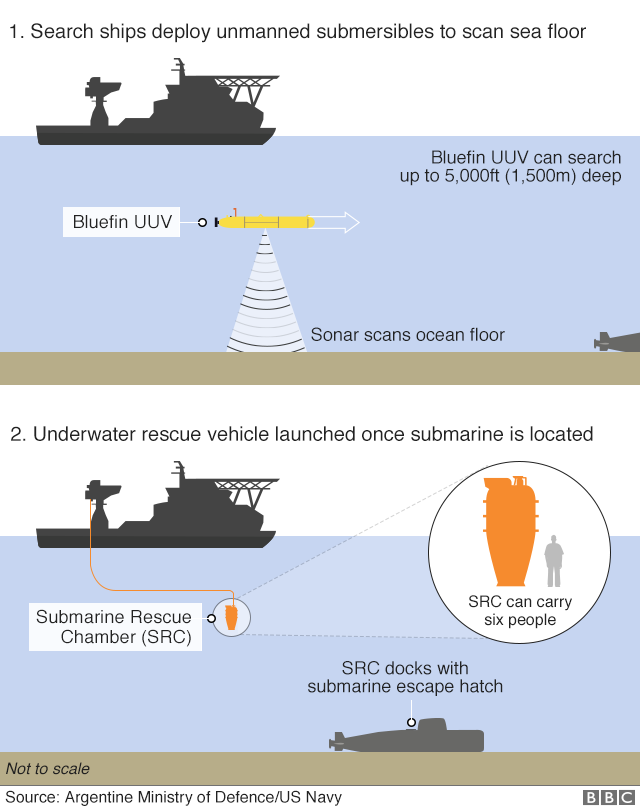
- Published24 November 2017

- Published23 November 2017
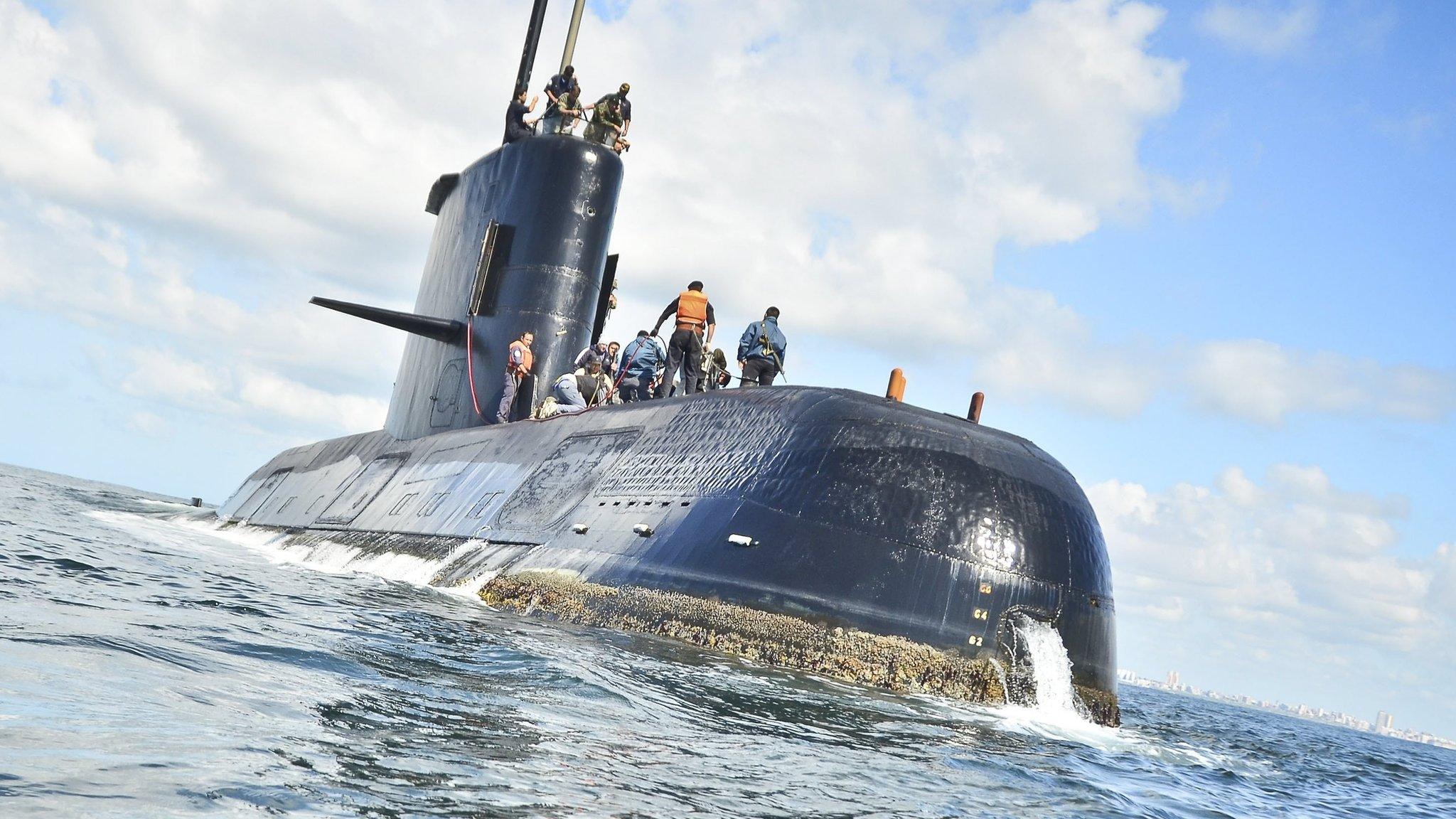
- Published23 November 2017

- Published23 November 2017
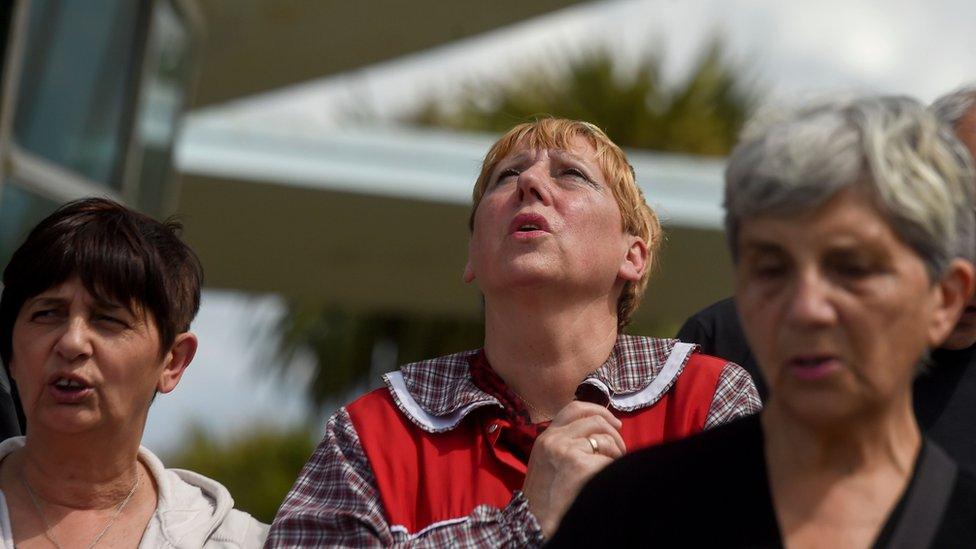
- Published21 November 2017

- Published22 November 2017
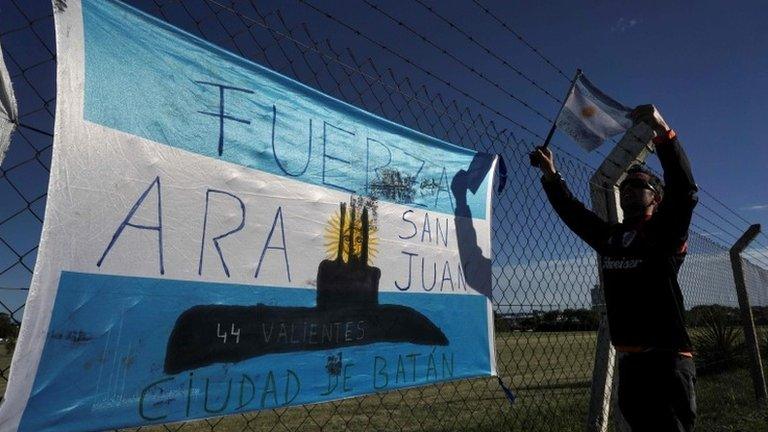
- Published23 November 2017
